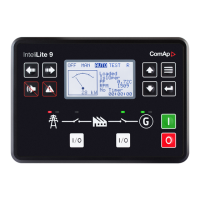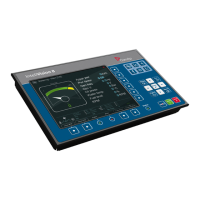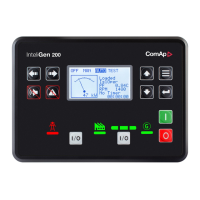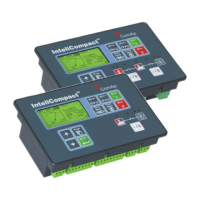IGS-NT Combi, SW Version 3.0, ©ComAp – May 2013
IGS-NT-Combi-3.0 Reference Guide.PDF
rate adjusted by this setpoint.
The rate is adjusted in seconds for 100% load change (from 0 to 100% of nominal
power).
The ramp takes place in following situations:
The gen-set has been just synchronized and is ramping up to the target
load level (e.g. baseload in parallel to mains operation or average gen-set
load in multiple loadsharing operation). The starting point of the ramp for
this case is adjustable by the setpoint RampStartLevel.
The gen-set is running parallel to the mains and baseload is changed.
The gen-set is beeing unloaded before opening the GCB and stop. In this
case the end load level is adjusted by setpoint GCB Open Level and the
timeout for unloading is adjusted by setpoint GCB Open Del.
Setpoint: Load gain
This setpoint adjusts the gain factor (P-factor) of the load control PI loop. The
integration factor (I-factor) for the load control loop is adjusted by the setpoint
Load int.
NOTE:
See the chapter Regulation loops overview for general information about
regulation loops and their adjustment.
Setpoint: Load int
This setpoint adjusts the relative integration factor (I-factor) of the load control PI
loop. The gain factor (P-factor) for the load control loop is adjusted by the setpoint
Load gain.
Setpoint: RampStartLevel
This setpoint adjusts the load level at which the Load ramp starts after the GCB has
been closed. The intention of this setpoint is to give the gen-set certain "loading impulse"
right after closing the GCB to avoid possible oscillations around 0kW or even reverse
power if the ramp begun at 0kW.

